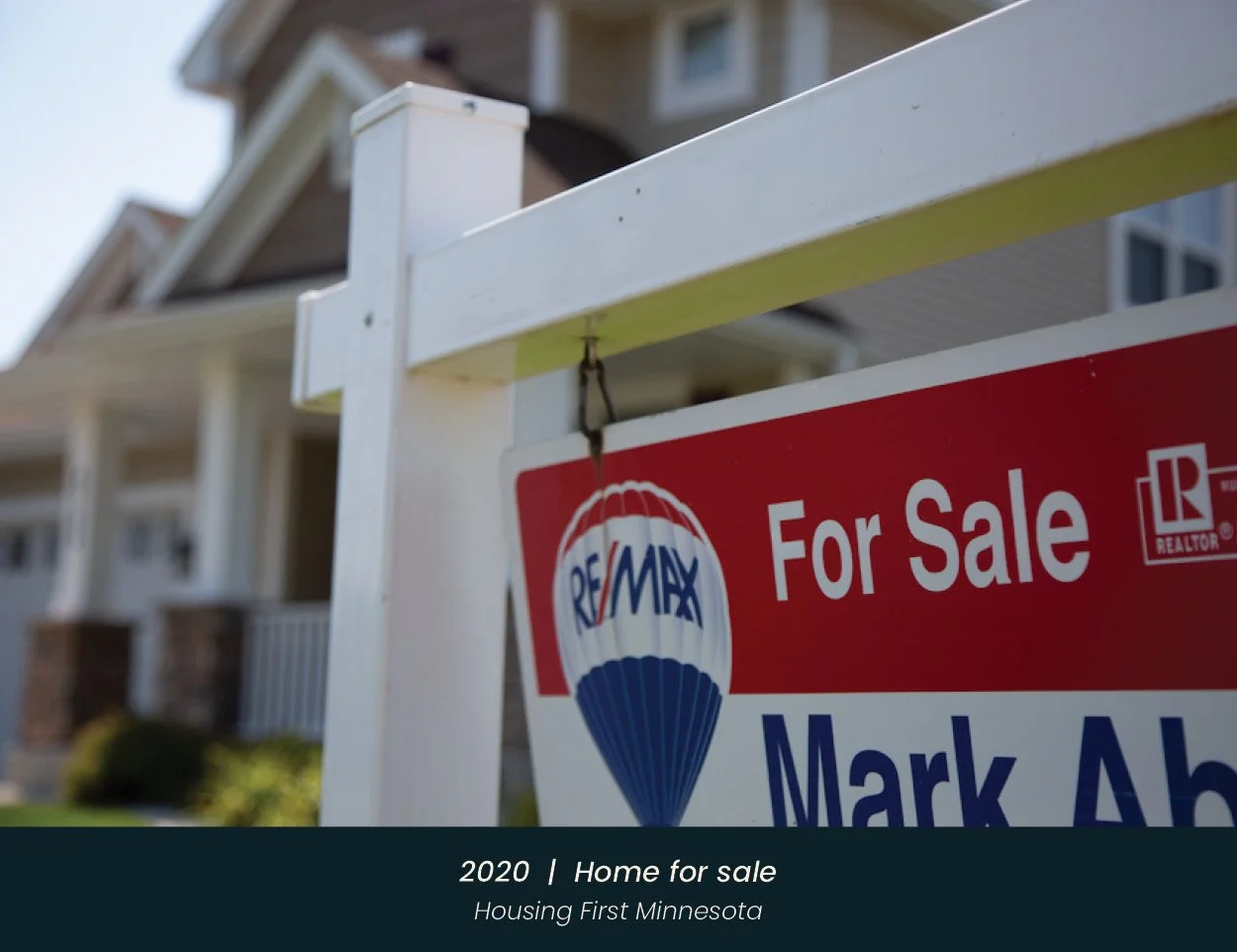The History
Minnesota’s housing market has a complicated and difficult history. From its earliest days, Minnesota has prioritized homeownership, but not for all Minnesotans.
1926 | Home construction
Minnesota Historical Society | Kammerdiener, J.H.
Unfortunately, this challenge continues today.
As Minnesota grew, so did our state’s commitment to resource protection with strong infrastructure and vibrant amenities in our communities. Our shared goals of homeownership and resource protection have co-existed effectively for much of Minnesota’s history. But unfortunately, over the past several decades, they have become imbalanced and affordability has suffered.
Resource protection and housing requirements have grown into roadblocks to homeownership. Today, the zoning, regulation, and infrastructure desires have overwhelmed the basic realities of homeownership access in Minnesota.
Although our housing market serves many Minnesotans and meets the regulatory desires of government agencies and cities, it completely fails to reach our state goal of homeownership for so many, particularly non-white Minnesotans, members of our workforce, and our millennial and Gen-Z friends and neighbors.
This look at our history shows how affordability has eroded, and how the growth of roadblocks has kept homeownership out of reach for too many Minnesotans.
Minnesota’s Housing History
1888 —
Minnesota is growing rapidly – Minneapolis and St. Paul are becoming major U.S. cities. The first platting of land and permitting of homes is recorded by cities in Minnesota.
1910 —
Racial covenants emerge as tools used by cities and real estate developers to prevent people of color and certain faith or ethnicities from buying or occupying property
1920s —
Transportation such as street cars, automobiles, and busses drive housing decisions: street cars, etc. Homeownership rates climb to nearly 50%
1930s —
Federal housing policies endorsed racial covenants as legal instruments, requiring them for projects receiving federal financing. Lenders followed suit, routinely ‘red-lining’ or denying loans for properties in racially mixed neighborhoods.
1930s —
The Great Depression and World War II strained the housing market. The homeownership rate dipped to 43% by 1940
1930 -1953 —
Racial covenants spread from Minneapolis & St. Paul to first ring suburbs such as Richfield, Edina, Golden Valley, Minnetonka, and more. The GI Bill largely excludes Blacks from its benefits and the opportunity for homeownership.
1953 —
The Minnesota Legislature prohibits the use of racially restrictive housing covenants
1945
-1960 —
Homeownership surges across the U.S. with a 50% increase in homeownership rate – to 62%. Median home price: $31,500
1970s —
Housing booms – 19.7 million housing units are constructed in the 1970s, a 29% growth in housing supply despite three recessions in the same decade. Demand soared, driven by the first wave of baby boomers – the housing market delivered.
1971
-1991—
The Minnesota Legislature creates several key resource protection laws: the first state building code, authorization for cities to require land dedications for parks and trails, establishment the Metropolitan Land Planning Act for infrastructure and land use, the state's first energy code, and the Wetlands Conservation Act.
While these new areas of law were broadly supported by the public for their contribution to resource protection throughout the state, they also brought with them unintended consequences. These changes regrettably tipped the delicate balance between affordability and resource protection. Rapidly growing regulatory cost impacts for homeowners building a new home became the norm. The voice of affordability was either drowned out or absent.
1980 —
Homeownership falls nationally for the first time since the 1930s. Development regulations surge, including park dedication requirements, tree preservation plans, and homeowner funded infrastructure.
Median home price: $105,100
1992 —
Twin Cities suburbs begin to incorporate zoning rules to require large home, large lot developments. Sadly and undeniably, this was a tactic used to "protect the character" of certain cities, effectively limiting diversity.
2000 —
Homeownership rate at 74.6%, homeownership gap at 35.1%. New environmental protections for stormwater water management and lead paint removal are introduced and bring with them additional costs.
Median home price: $200,000
2007
-2009 —
Housing crash impacts families across Minnesota. Foreclosure crisis decimates home values.
2010s —
Minnesota's homeownership rate once again grows, reaching 73%, but not for all. For minority communities the homeownership rate stands at 36%.
Median home price: $150,000
2019 —
Housing Affordability Institute Releases ‘Priced Out. The True Cost of Minnesota’s Broken Housing Market’. Regulatory programs in Minnesota have grown so substantively they are now major roadblocks to affordable homeownership. No progress is achieved on the equity gap.
2019 —
Minnesota's homeownership rate grows to 71.4%
Minnesota's homeownership gap rises to 31%
Median home price: $305,000
Data From Federal Reserve
Median Sales Price of Houses Sold in the United States
Source: U.S. Census Bureau and U.S. Department of Housing and Urban Development, Median Sales Price of Houses Sold for the United States [MSPUS], retrieved from FRED, Federal Reserve Bank of St. Louis; https://fred.stlouisfed.org/series/MSPUS, December 4, 2020.



















